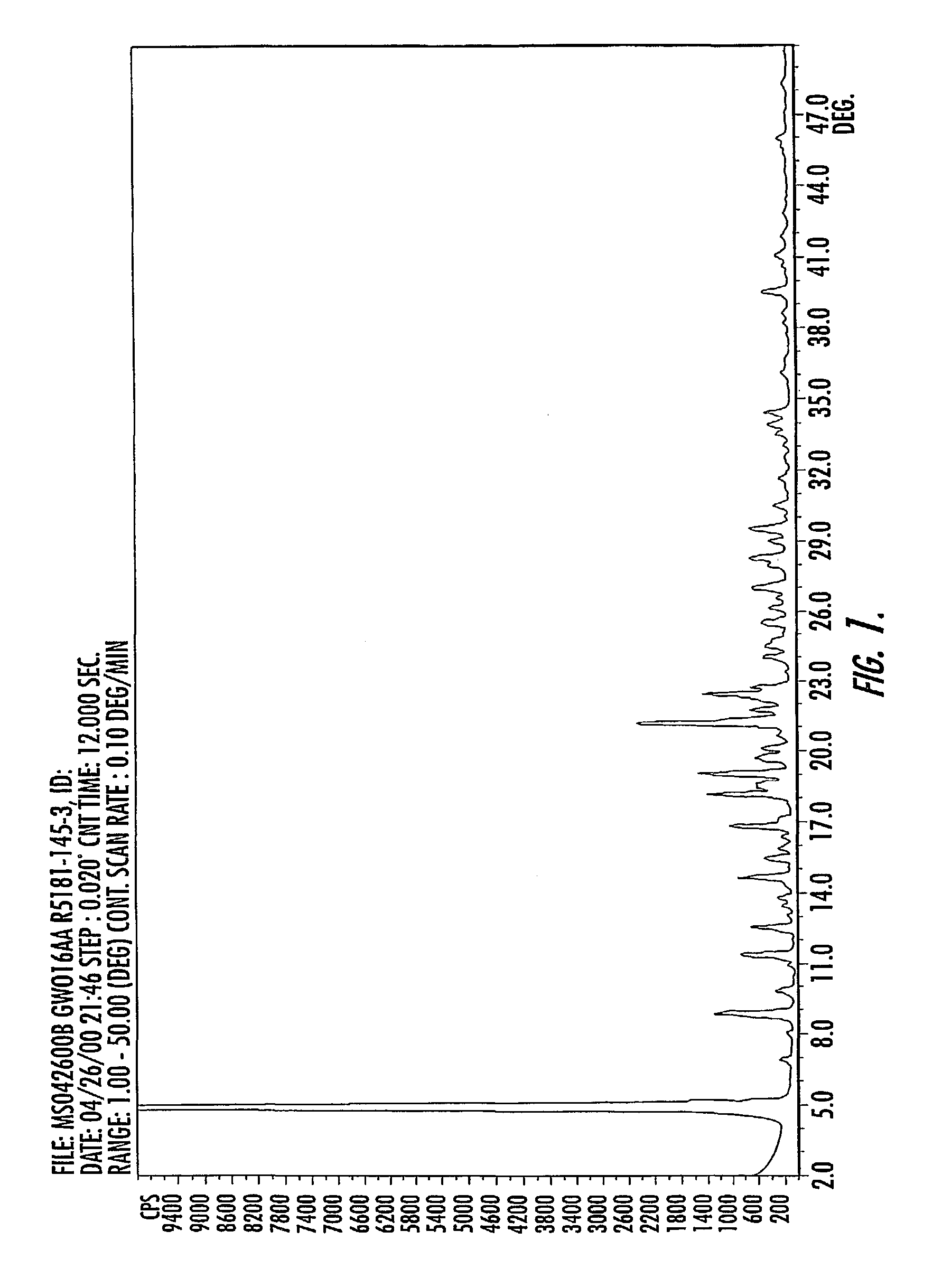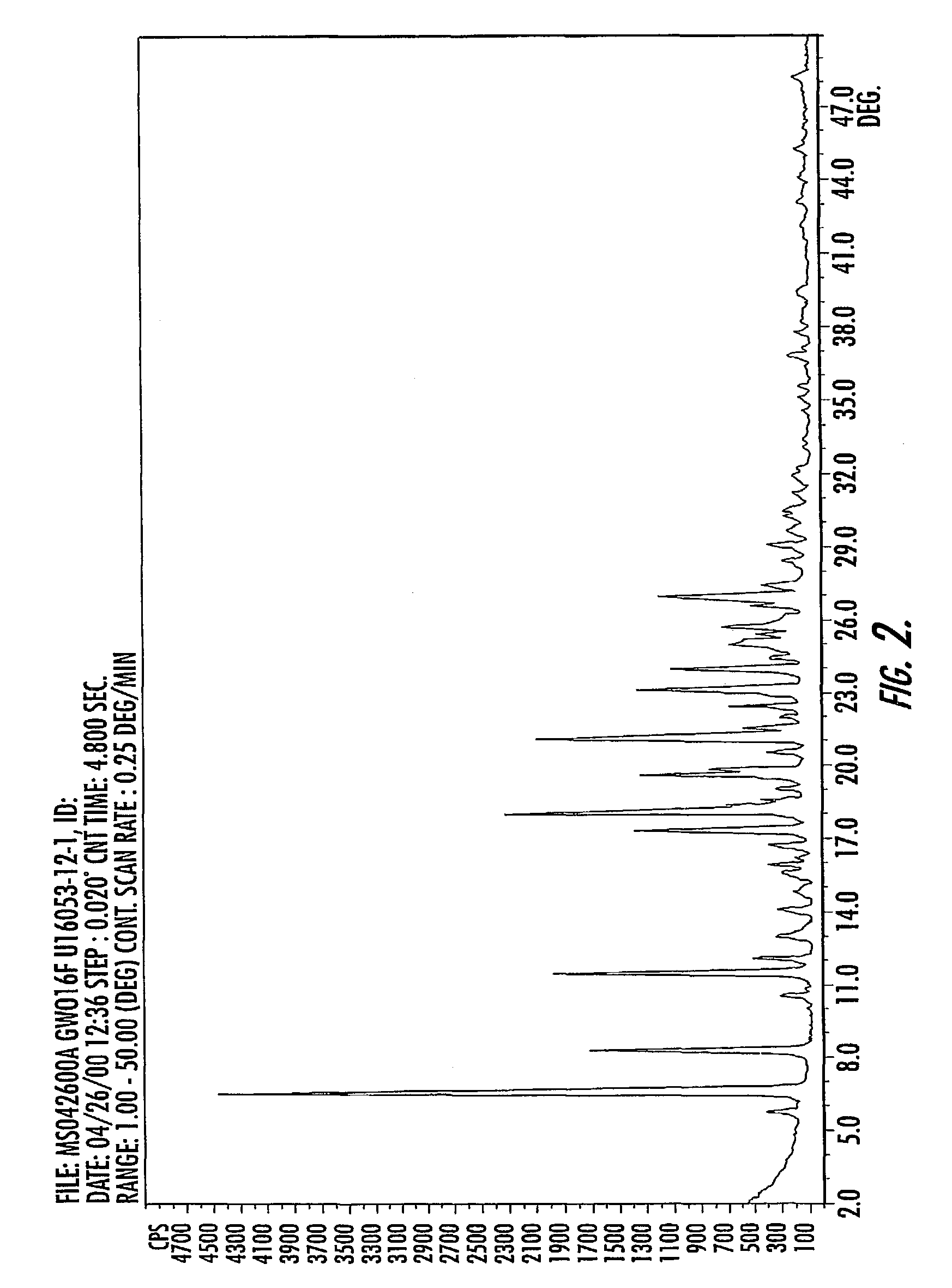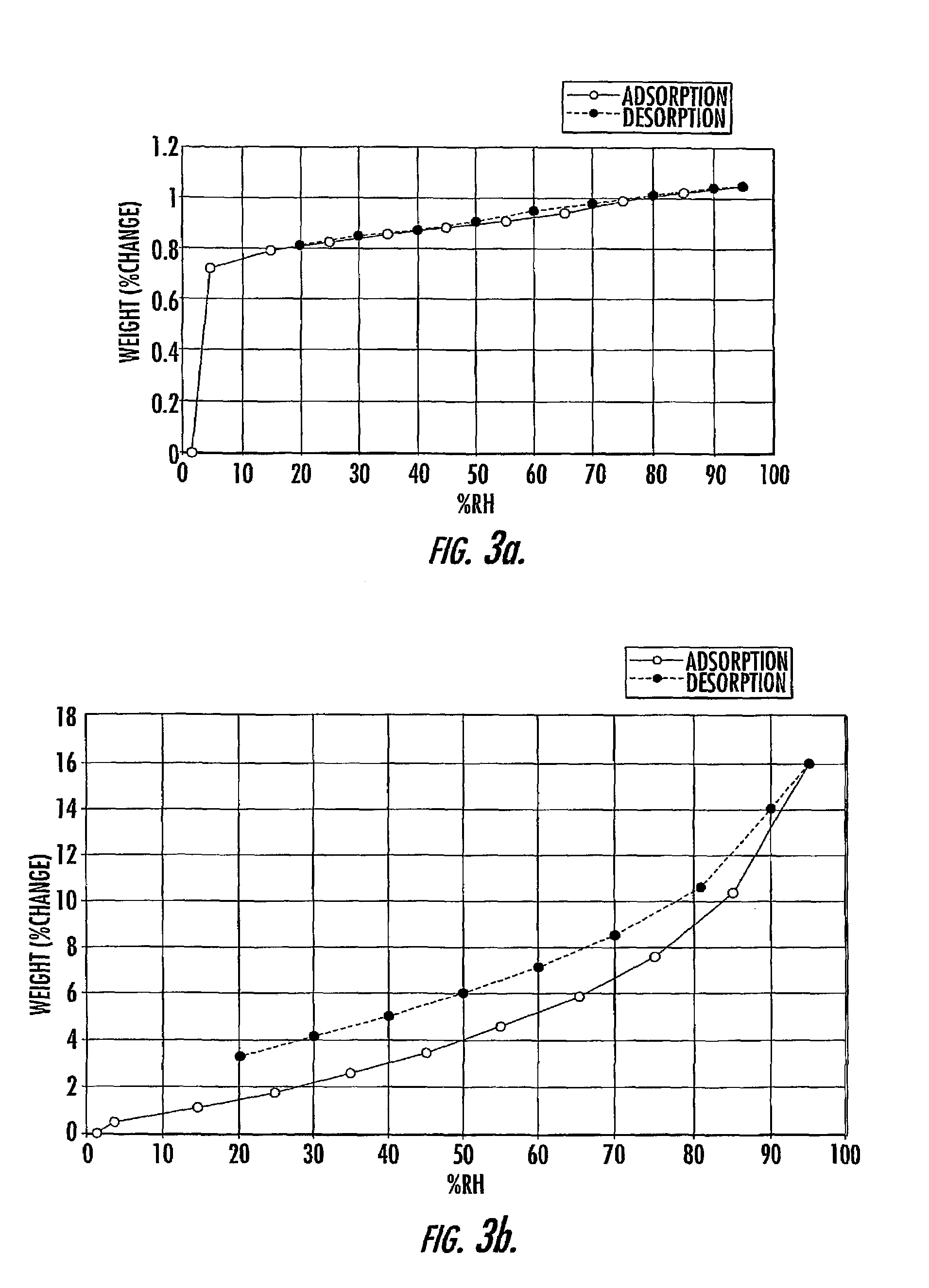Quinazoline ditosylate salt compounds
a technology of ditosylate salt and compound, which is applied in the field of ditosylate salt of 4quinazolineamine, can solve the problems of compromising the suitability of compound as a medicament, uncontrolled cell growth, and large amount of water sorbing
- Summary
- Abstract
- Description
- Claims
- Application Information
AI Technical Summary
Benefits of technology
Problems solved by technology
Method used
Image
Examples
example 1
Preparation of 5-(4-[3-chloro-4-(3-fluorobenzyloxy)-anilino]-6-quinazolinyl)-furan-2-carbaldehyde
[0152]To a reaction vessel was added N-{3-chloro-4-[(3-fluorobenzyl)oxy]phenyl}-6-iodo-4-quinazolinamine (100 mg; 0.198 mmol), 2-formylfuran-5-boronic acid (Frontier Scientific, 42 mg; 0.297 mmol), 10% palladium on activated carbon (5 mg; 0.05 wt), DME (2.0 mL), MeOH (1.0 mL) and triethylamine (83 μL). After heating at 50° C. for 14 h, a HPLC indicated 98.5% clean conversion. 1H NMR (d6-DMSO) δ: 11.44 (s, 1H), 9.38 (s, 2H), 9.11 (s, 1H), 8.90 (s, 1H), 8.39 (dd, 1H, J=8 and 4 Hz), 7.89 (d, 1H, J=12 Hz), 7.84 (d, 1H, J=4 Hz), 7.60 (dd, 1H, J=8 and 4 Hz), 7.47–7.42 (m, 2H), 7.44 (AA′BB′, 2H, JAB=8 Hz), 7.35–7.25 (m, 3H), 7.24 (d, 1H, J=4 Hz), 7.16 (dt, 1H, J=8 and 4 Hz), 7.06 (AA′BB′, 2H, JAB=8 Hz, 6.84 (d, 1H, J=4 Hz), 5.27 (s, 2H), 4.43 (s, 2H), 3.61–3.50 (m, 2H), 3.47–3.36 (m, 2H), 3.09 (s, 3H), 2.23 (s, 6H).
example 2
Preparation of 5-(4-[3-chloro-4-(3-fluorobenzyloxy)-anilino]-6-quinazolinyl)-furan-2-carbaldehyde
[0153](i) In situ Preparation of 2-diethylacetal-furan-5-boronica acid
[0154]A 20 L reaction vessel was charged with 6.7 volumes of DME and 0.67 wt., (740 grams, 410 mL, 4.35 mol) of 2-furaldehyde diethyl acetal and cooled to −40° C. under reaction / contents control. n-Butyllithium, 1.32 wt. (2.5 M in hexanes, 1.45 kg, 5.22 mole) was added over ca. 40 minutes using a ChemTech CP120 metering pump containing a ceramic head. The internal temperature rose to −31° C. The reaction mixture turned very dark, but was homogeneous. After the addition was complete, the lines were flushed with ca. 0.17 volumes of hexane directly into the reaction vessel. When the internal temperature decreased to −40° C., the reaction mixture was stirred for an additional 2.5 hrs. After 2.5 hours, 1.1 vol (0.89 wt, 982 grams, 5.22 mol) of triisopropylborate was added via the metering pump over 20 minutes. A slight exot...
example 3
Preparation of 5-(4-[3-chloro-4-(3-fluorobenzyloxy)-anilino]-6-quinazolinyl)-furan-2-carbaldehyde Using in situ Protected 2-furaldehyde
[0157]N,O-dimethylhydroxylamine hydrochloride (629 mg; 6.32 mmol) was suspended in THF (19 mL; 40 Vol), and the flask was cooled to −40° C. (Cryocool-controlled isopropanol bath). n-Butyllithium (2.5 M solution in hexanes; 5.3 mL; 13.2 mmol) was added at a dropwise rate while the internal temperature rose to −12° C. However, the mixture quickly cooled back to −40° C. After 30 min at −40° C., 2-furaldehyde (481 μL; 5.74 mmol) was rapidly added to the mixture which caused the internal temperature to rise to −28° C. Again, the temperature dropped quickly back to −40° C. After 15 min at −40° C., n-butyllithium (2.5 M solution in hexanes; 2.8 mL; 6.89 mmol) was added at a dropwise rate, while the internal temperature was maintained below −35° C. During the course of addition, the mixture turned yellow. After the addition was complete, the mixture was allo...
PUM
| Property | Measurement | Unit |
|---|---|---|
| RH | aaaaa | aaaaa |
| RH | aaaaa | aaaaa |
| particle size | aaaaa | aaaaa |
Abstract
Description
Claims
Application Information
 Login to View More
Login to View More - R&D
- Intellectual Property
- Life Sciences
- Materials
- Tech Scout
- Unparalleled Data Quality
- Higher Quality Content
- 60% Fewer Hallucinations
Browse by: Latest US Patents, China's latest patents, Technical Efficacy Thesaurus, Application Domain, Technology Topic, Popular Technical Reports.
© 2025 PatSnap. All rights reserved.Legal|Privacy policy|Modern Slavery Act Transparency Statement|Sitemap|About US| Contact US: help@patsnap.com



